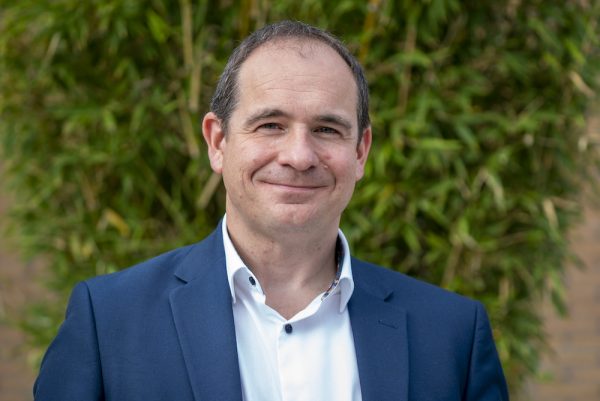The collection and analysis of policing data have become a cornerstone of modern law enforcement. In their vision for policing to 2030, the National Policing Digital Strategy clearly states more efficient use of the masses of data available to the police is a priority.
“Data-driven insight has the potential to be a ‘force multiplier’ – increasing
the predictability, precision, pace and impact of our interventions, from simple chatbots that use historical data to better support citizens, to more complex systems that can provide insight into crime location and optimum resource deployment,” the report from the NPCC (National Police Chiefs’ Council) and the Association of Police and Crime Commissioners concludes.
Just as businesses have begun to harness the vast quantities of information they collect daily to deliver new goods and services to their customers, so the police are increasingly using advanced data collecting techniques. Coupled with cutting-edge data analytics, a new age of data-driven policing is taking shape.
However, the mass of data that can be collected in connection with a crime can be vast. One example given by The Police Foundation in their report is telling: “The NCA, Metropolitan Police Service (MPS) and the National Police Chiefs’ Council (NPCC) recently reported to parliament that in one case led by the MPS, a simple case involving two mobile phones resulted in 20,000 items of data (messages, photos, internet history) needing to be examined, which took around 150 officer hours to review and schedule.”
And the quantities of data that can be collected is about to explode. The developing 5G network and IoT (Internet of Things) that is rapidly expanding will deliver millions of more datapoints police forces could collect. The legal and jurisdictional challenges this new data environment will present have yet to be discussed in any detail.
Paul Steinberg, SVP and Chief Technology Officer at Motorola Solutions explained to Silicon UK: “Combining the benefits of AI, human judgment and an end-to-end software solution technology can help police personnel to simplify tasks and workflows and put different data pieces together – such as CCTV footage, sensor alarms, records and reports – in a clear, coherent way.

“The output then enables efficient and centralized operations to more quickly spot fine details that lead to breakthroughs in crime prevention, and quickly relay them to officers on-the-ground. In short, intelligent software solutions help to get the right information, to the right people, at the right time and support officers to restore focus on the communities they serve.”
Unlocking insights
When advanced analytics is applied to large datasets insights that had been hidden from view are revealed. The data being used must also be interrogated within strict guidelines.
The National Policing Digital Strategy talks about policing data ethics: “Develop a National Data Ethics Governance model, which will outline standards and guidelines to be adhered to and embedded in our decision-making processes. And establish a core principle that the public’s views on data analytics are pro-actively built into an ethical assessment at the design stage of any digitally-enabled service improvement.”
Linking data together is also at the core of how police forces use data. Already in use, the Qlik Sense tool can connect separate sources of data together to deliver insights that would have previously been hidden.
Speaking to Silicon UK, Adam Mayer, Senior Manager at Qlik explained: “With approximately 6,000 people working across the organization, Avon and Somerset Constabulary is one of the largest police forces in the UK and has been using Qlik Sense to put data analysis in the hands of its police officers since August 2016.

“It is used across the force, from command centre staff through to chief officers; and provides insights into officer availability, suspect management and officer objectives – to name just a few examples. The visuals are prominently displayed on screens across its command centre, giving staff detailed and accurate information on the live jobs coming in, and they are used as the focal point for police officer briefing sessions.
“With information clearly mapped out and made it easier to analyze, the police force can fight crime more effectively. That could be either through dispatching police officers to the right area to meet public demand or using previous staffing data to pre-emptively allocate officers to certain areas where crime levels are prominent.”
In conclusion: “Qlik Sense has supported the force’s in achieving its objective of identifying and dealing with its top thirty highest risk offenders. This has led to a notable number of offences being dealt with in a more time-efficient manner. For example, in one week alone, twenty-five of the ‘most wanted’ suspects (from the area Top Ten lists) were arrested and a further three were interviewed through voluntary attendance.”
How data is used across a force is transforming. However, the real value of data has yet to be fully realized, as datasets can be siloed and, forces can find it difficult to connect their databases to other constabularies. We do not, however, have a comprehensive UK wide connected information access.
“Law enforcement is continually challenged by competing priorities and demand,” says Mark Owens, Managing Director, Northern Ireland, Civica “With competing demands for finite resources, data analytics within policing will become more ‘real-time’ in the future. This will allow officers access to the information within seconds rather than the time it takes for reports and information to be reviewed or retrieved from systems.

“For example, if an officer stops a car, they need information around the occupant’s potential criminal history and outstanding warrants. This currently works by manually retrieving the details, but officers travelling through an area and receiving real-time alerts on potential criminal activity based on their location, could be more useful in their mission of preventing crime. Some forces in the US are already using information from previous incidents to position high visibility police vehicles in the area to deter criminality.”
Owens concluded: “Police forces need to be able to understand the true levels of demand and where they can design out repeat demand. This is where data sharing is key. For example, traditionally, a number of separate individuals would call into emergency service control rooms requesting service and requiring a policing response over a prolonged period of time. By reviewing the incidents and appropriately triaging, a solution was designed – the person concerned had mental health issues and was vulnerable. Through the sharing of data and prioritizing other agencies to conduct intervention and treatment assistance, this resulted in no more calls for service.”
Policing 4.0
Industry 4.0 is transforming many businesses from all sectors. Policing is equally being transformed by technologies. The expansion of AI-based tools, the use of drone technology, cloud computing and predictive analytics, all add up to policing that will look very different over the next decade.
The challenges of policing autonomous vehicles, the potential threat to policing of blockchain technology and the new threat landscapes revealed thanks to COVID-19, will see every force adopt increasingly using sophisticated technologies. It’s how these tools are used that must be carefully considered.
Could the more efficient use of data analytics prevent crime? Clearly, the use of AI – particularly machine learning – without oversight and an understanding of potential bias has high risk.
Already systems are being tested, notably, the National Data Analytics Solution (NDAS) coordinated by the West Midlands Police. The system includes a component called the Most Serious Violence (MSV) to predict this type of crime. However, the West Midlands’ Police Ethics Committee has publicly stated that coding errors mean the accuracy of MSV can’t be relied upon. Developing these kinds of policing tools is fraught with danger.
Liberty, in their report, concludes: “While it may seem that predictive programs can discover new and useful trends in offending behaviour, many will simply restate pre-existing patterns of exclusion and inequality. Investment in digital solutions should focus on the development of programs and algorithms that actively reduce biased approaches to policing. Any policing approach that relies on a combination of predictions, profiling and the idea of ‘pre-criminality’ puts our rights at risk.”
Motorola Solutions’ Paul Steinberg also commented: “The role of data analytics relies more on great data quality than massive, indiscriminate datasets. Technology itself has no bias. If the data being used to train the machine learning algorithms or the data being processed by the AI is of poor quality, then any models generated from that data or insights that come from the analysis of it will likely be of poor quality too, and potentially subject to bias. With high-quality datasets and mature technology come more nuanced and accurate models that can help predict crime sooner and more accurately.”
The police have continued on their digitization roadmap and are developing their use of advanced data analytics. The future of policing is clearly the collection of more data from many more data points. As technologies like IoT take route and proliferate, the opportunities to gather what could be highly personal information will become easy to accomplish. This collection and analysis, though, must be done via systems that understand the potential for bias and discrimination.
Silicon in Focus
John Rennie, General Manager, Public Safety NICE.

In the past, the police have been slow to adopt new technologies. Has this now changed? Are police forces using the latest technologies to fight all types of crime?
“The pace of new technology adoption in policing is definitely growing. Many police forces are now implementing full-time roles for specialists whose sole mandate is to bring on new technologies to help modernize policing, so officers can spend less time on routine tasks and more time interacting with the communities they serve. In particular, the cloud, mobile applications, information sharing tools – all of these things are coming into play to help police work more efficiently and effectively.
“Following a broader government trend, forces are also taking a more agile approach to adopting new technology. We see far fewer of the multi-year ‘big-bang’ type projects and more incremental adoption, which allows forces to reap the benefits of technology adoption faster. Instead of generating a massive list of requirements which can cause cost over-runs and extend project timetables, forces are now zeroing in on the one or two really key requirements, moving quickly to get something deployed, and then building on that. When you consider how fast technology changes, this approach makes perfect sense.
“Another factor driving technology adoption is the evolving police workforce. Individuals who are now entering the workforce have grown up in a more technology-rich world, and they’re rightfully questioning why the technology that’s available to them outside of work is not available in the workplace. Frankly, that’s raising the expectations of what police should be doing with technology.”
Can you point to a current technology that is having positive and tangible impacts on policing?
“Cloud-based Digital Evidence Management Solutions (DEMS) touches many aspects of policing and have been immensely helpful in creating positive and tangible impacts for both police forces and the general public.
“For example, now instead of having to hand over a cell phone with evidence on it, citizens can conveniently upload photos and videos via a secure link; and forces have a much faster, easier way to issue public appeals.
“DEMS also keeps digital evidence digital. This means investigators no longer need to physically check DVDs and USB drives in and out of evidence rooms because the evidence is securely managed in electronic case folders. That evidence is also immediately accessible to investigators, for example, during suspect interviews, which can lead to confessions and earlier charging decisions. If you can reach a charging decision without having to release a suspect and later bring that suspect back in, you’re saving thousands just on that one case alone.
“For forces, the ability to share evidence electronically and instantaneously, and make that evidence securely accessible anytime, anywhere, is a game-changer too. Forces can share digital evidence with the Crown Prosecution Service (CPS) or with another force sixty miles away, without having to copy all that evidence onto DVDs or USB drives and get in the car and drive it there.
“Finally, extending these capabilities into the mobile world helps officers do a better job when they’re out in the community, both in terms of responding to and investigating incidents.”
Is technology enabling the police to connect the digital and physical worlds together to deliver an integrated service to the public?
“Yes, and technology is doing this in multiple ways:
“Firstly, there is an inherent physical, digital crossover in policing. Today, almost all of the information collected about physical crimes is digital or is converted to digital. It can come from home security videos; ring doorbells, CCTV cameras in city locations, shops, petrol stations; cell phone videos; social media; police body-worn cameras; crime-scene photos; the list goes on and on. Because there’s so much data, all stored in different places, it can slow down investigations. Worse, crucial evidence can be overlooked. This results in fewer crimes being solved which can lead to community concerns over safety.
“By moving digital evidence into the cloud, and augmenting investigative know-how with analytics, investigators can more easily put the puzzle pieces together. They also can spend more time thinking about their evidence, and less time trying to find it.
“The second way that technology is bridging the digital and physical worlds relates to how forces interact with citizens. Today, people have become accustomed to interacting with government services and all types of businesses electronically. The current COVID-19 pandemic has made this more of a necessity.
“Ordinarily, digital evidence needs to be collected in person, copied onto discs, and then physically handled many times. With new DEMS technology, however, investigators can gather evidence (from citizens and businesses) while social distancing and without risking physical contact.”
Is effective policing today about data and how effectively it can be analyzed?
“The size of the digital universe is doubling every two years, and policing is no exception. Effective policing is based on intelligence and having information is part of that. But it can be a complex exercise to get good information out of lots of multimedia data. As humans, we just can’t feasibly review it all. So, the key is to use analytics to get as much insight and information out of the data as we can, and to do it in a way where unconscious biases don’t come through. Biases can be amplified through analytics if you’re not careful.
“Also, we need to keep in mind that data is hugely important, but only as part of a bigger picture and a plan. Community relationships and the interpersonal aspect of policing within a community is critical. Forces need to be looking at how they can harness their data to be more efficient, effective and connected to the communities they serve, as well as supporting the kinds of positive policing outcomes they want to achieve.”
How do we harness the power of digital, data and technology to protect better the communities the police serve?
“To better protect their communities, forces first need to have a trusted relationship with them. One way to do that is to make it easier to share information with the community and get data back as well.
“A NICE survey revealed that 95% of citizens would be willing to share pictures, videos, tips, or other evidence if they witnessed a crime or serious incident. The problem is – most police departments don’t make it easy. For example, if someone knows their phone might be taken because it contains digital evidence (photos or videos), they’re not likely to offer it up. On the other hand, if they can click on a simple web link and securely upload those same photos or videos, that’s an entirely different matter.
“Fortunately, there are digital tools today that can transform the way police and citizens work together. In fact, in the wake of the current pandemic, some forces, like North Wales Police, have taken the initiative to deploy these new digital tools to better support community and officer safety, by minimizing in-person contact.
“For example, North Wales Police recently announced that it was transitioning its processes from officers travelling to collect digital evidence on a disc or USB to collecting evidence online. This means that officers will be able to review vital evidence faster as well as reducing any risks around disc handling and visiting premises unnecessarily.
“The Department is also able to share online evidence with its partners (such as the CPS and courts), allowing them to review evidence sooner and with less risk. The feedback from officers has been really positive. They see the change as being here for good and really helping them to become more effective in what they do.”
If you missed it, you can read part 1 of this series here.
In the next and final part of this overview of policing and their use of technology, Silicon UK will be looking at what the future could look like for the police’s use of technology.
Don’t forget to sign up to the Silicon UK newsletter to ensure you don’t miss the next part of this series.





